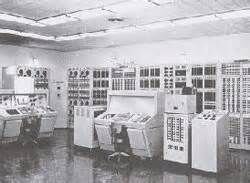I finally found the post that I had in the back of my mind on this. I never could find it in the wiki's either. Chalk it up to a noob I guess. Thanks everyone for your input. Very helpful.
I have about 3 cords c/s/s with around 2.5 cords of that will be around 16 months seasoned when time to use. I've been checking the moisture content and most of it seems just right. I've got a lot of oak reading 19% (freshly split) on the meter already, but some larger splits that read 24-32%. As I looked at those numbers on my oak, I had a post I'd read last year pop up in my mind but never could find it till now. Your input helped to clarify what I was already noting though - feel, sound, and known time in the sun/wind/heat is the real basis for knowing it'll be ready to burn.
=============================================
Battenkiller,
Jan 10, 2011
Battenkiller
Minister of Fire
There are different ways of
expressing moisture content, which don't at all have to do with the method of determining them. The EPA test loads are Douglas fir that is between 16 and 20% wet-basis. That is expressed by taking the weight of the water present and dividing it by the weight of the entire split. Your moisture meter is calibrated for Doug fir as well, but the calculations done by the chip inside of it (or the width of the scale divisions if you are using an analog meter) are done using the dry-basis method of expressing moisture content. That is expressed by taking the weight of the water and dividing it by the weight of the dry fiber that would be present in the wood after
all the water has been theoretically driven out (as would be done in a 215º oven in a lab).
Naturally, you get very different numbers, and this effect grows increasing more substantial as MC rises. It's a mathematical thing, and has nothing to do with the actual wood, which always has the same amount of water in it.
If you want a real easy way to convert dry-basis meter readings to the wet-basis used by the EPA tests, just divide the number on the meter by that same number plus 100, and you will get the correct wet-basis MC every time.
For example, the meter says the wood is 25% MC. Add 100 to 25, then divide that number (125) by the original reading. 25/125 = 20% MC wet-basis. The high end of the EPA test range... perfect for you stove.
In another case, the meter says the wood is 19% MC. Add 100 to 19, then divide that number (119) by the original reading. 19/119 = 16% MC wet-basis. The low end of the EPA test range... perfect for your stove.
As far as a definite cutoff number, I don't believe it exists. The way you load the stove, the type of wood, the way the wood is split, the amount of coals in there, the internal stove temps, the timing and size of wood additions, the strength of your draft.... all things that can and sometimes do have a more profound effect on the burn then just MC and draft opening. For me, the theoretical cutoff is 25% MC wet-basis (33% MC on the meter). That's 5% more water in the wood than the maximum allowable MC in the EPA test loads. Above that, you will likely have a progressively harder time burning your wood without micro-managing the stove.


